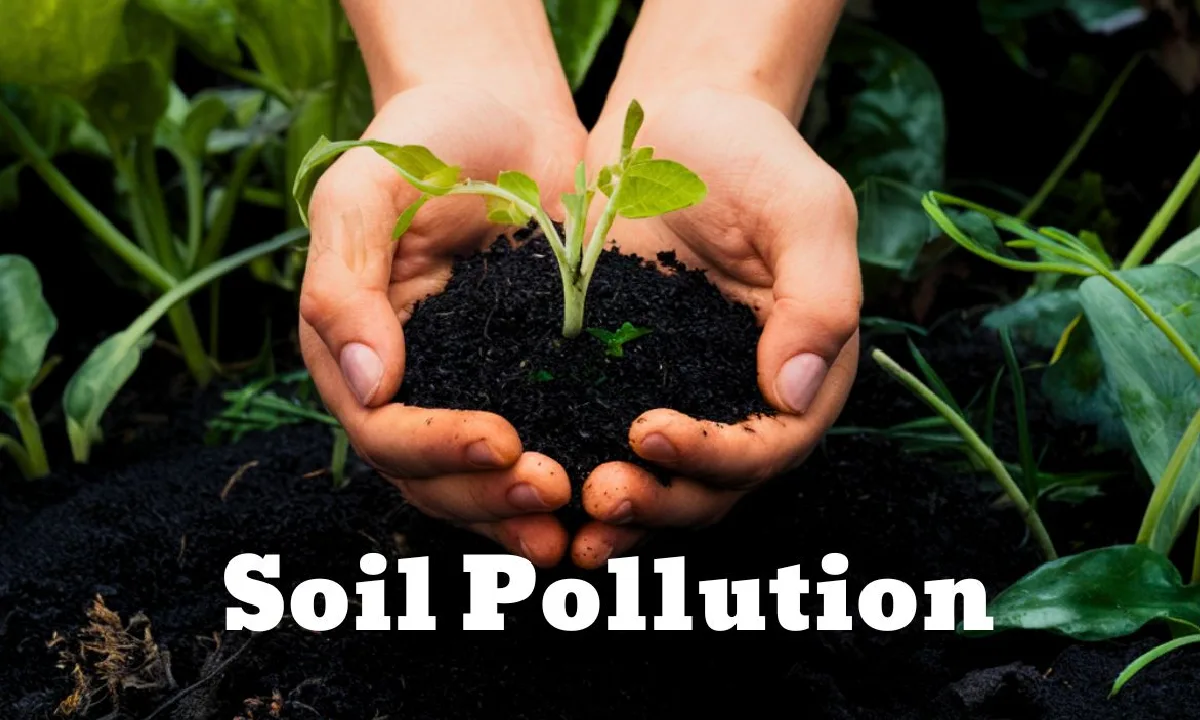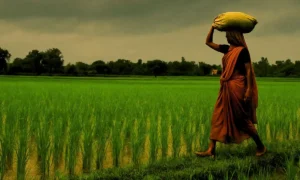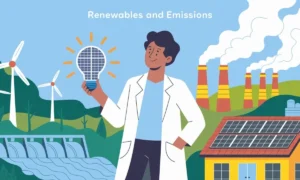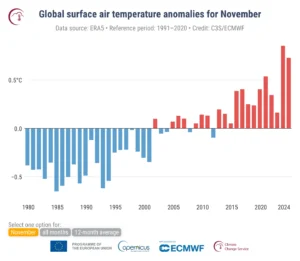Soil Pollution: Causes, Effects, and Solutions

Soil pollution is one of the significant concerns worldwide. World Soil Day on 5 December is meant to raise awareness about the growing challenges in soil management and soil biodiversity loss.
The day is celebrated to encourage governments, communities, and individuals around the world to commit together to improve soil health.
Soil has a specific composition with organic matter, minerals, air, water, and living organisms. Plants that feed us need soil to grow and flourish. The natural greeneries that we cherish on need ground.
But, like other forms of nature and ecosystems, soil has also suffered from pollution. Sadly, manmade elements are the main cause.
The 2018 Food and Agriculture Organization of the United Nations (FAO) report ‘Soil Pollution: A Hidden Reality’ defines soil pollution as;
“Soil pollution” refers to the presence in the soil of a chemical or substance out of place and/or present at a higher than normal concentration that has adverse effects on any non-targeted organism.”
According to a recent report by Cardiovascular Research,
“Pollution of air, water, and soil is responsible for at least 9 million deaths each year. More than 60% of pollution-related disease and death is due to cardiovascular disease.”
Industrial activities, agricultural chemicals, and improper waste disposal are typical sources. Soil contamination levels depend on the degree of activities and the amount and nature of chemicals used.
These main sources of soil pollution need to be controlled and mitigated. This would help combat soil pollution.
Soil pollutants when wash off into water bodies cause water pollution.
In this article, we will look to discuss sources, effects, and solutions to soil pollution.
Source and Effects of Soil Pollution
Some of the most hazardous soil pollutants are xenobiotics. These substances are not naturally found but are synthesized by human beings.
The term ‘xenobiotic’ has Greek roots – (xenos ‘foreign’; bios ‘life’). Several xenobiotics are known to be carcinogens and are hazardous.
| Causes of Soil Pollution | Effects of Soil Pollution |
|---|---|
| Industrial activities (e.g., mining, manufacturing) | 1. Decreased soil fertility |
| Agricultural practices (e.g., pesticide use) | 2. Loss of biodiversity |
| Improper waste disposal (e.g., landfills) | 3. Contamination of groundwater |
| Oil spills | 4. Soil erosion and degradation |
| Urbanization and construction | 5. Health risks to humans and animals due to toxic exposure |
| Deforestation | 6. Disruption of ecosystems and food chains |
| Accidental chemical spills | 7. Economic losses due to decreased agricultural yield |
One of the major sources of soil pollution is heavy metals.
1) Heavy Metals:
Toxic heavy metals like mercury, cadmium, lead, chromium, and arsenic, among others, accumulate in the soil due to human activities.
Excess heavy metals in the soil originate from many sources.
1) Solid Waste to Soil Pathways:
Solid waste contamination, especially from mining and industrial activities, is a major concern.
When they are piled, heavy metals can easily move and spread to surrounding water and soil.
Factors like sunlight, rain, and washing facilitate this movement.
2) Diffusion Sources:
Toxic metals are often largely dispersed in the environment.
Metal dispersion in the environment is due to inadequate handling of industrial effluents, improper waste disposal, combustion of fossil fuels and waste, agricultural activities, and power generation.
3) Flooding and Sediment Deposition:
When rivers flood, they can carry suspended sediment. These can also be particles containing heavy metals, from different sources.
As the floodwaters overflow onto land, much of the suspended sediment is deposited on alluvial soils.
4) Sewage to Soil Pathways:
Wastewater can be categorized into different types sanitary sewage, chemical wastewater, industrial mining wastewater, urban mining mixed sewage, etc.
When irrigation sewage is used, it brings heavy metals into the soil. Over time, this could lead to the accumulation of heavy metals like mercury, cadmium, lead, and chromium in the soil.
Sewage irrigation can be a solution for crop irrigation in arid areas. But, it’s crucial to pay close attention to the heavy metal contamination it can cause.
Effect of Heavy Metals on Soil
1) Effect on Plants:
Certain heavy metals are essential for plant growth. However, excessive amounts of these metals can turn toxic for plants.
Since metals cannot be broken down, when their concentrations exceed optimal levels within the plant, they can have direct and indirect negative effects on the plant’s health.
2) Effect on Humans:
Heavy metals are toxic substances. Therefore, can damage the nervous system and multiple organs. As well as potentially cause cancer in both humans and animals, even at low levels of exposure.
Their toxicity depends on several factors, including the variety, amount, and type of exposure.
Other sources of soil pollution:
apart from heavy metals some other sources are also there:
2) Inorganic Fertilizer:
Excessive use of inorganic nitrogen fertilizers leads to soil acidification. It is called agrochemical pollution.
3) Urban Activities:
When waste is disposed of improperly, it might contain chemical waste from residential areas.
Additionally, leaks in the sewerage system can also affect the quality of the soil.
4) Agriculture Activities:
Insecticides and pesticides’ extensive use over a long period leads to soil pollution.
The repeated use of these chemicals can cause insects and pests to develop resistance, rendering the pesticides less effective.
The quality of the soil could be degraded affecting crop quality.
These insecticides and pesticides contain chemicals that are artificially produced. They cannot be easily broken down by natural decay.
As a result, they can seep into the ground, especially when they mix with water, and gradually reduce the fertility of the soil.
5) Acid Rain:
Pollutants present in the air mix with the rain and fall back on the ground causing acid rain.
6) Industrial Activities:
The discharge of industrial waste into soils can indeed lead to soil pollution. Several common soil pollutants can originate from industrial waste.
Some examples include chlorinated industrial solvents, dioxins that are produced during the manufacturing of pesticides and waste incineration, plasticizers/dispersants, and polychlorinated biphenyls (PCBs). These pollutants can have detrimental effects on soil quality.
Effects of Soil Pollution
Soil pollution can have a variety of adverse effects on ecosystems and human health.
1) Food Chain Disruption
Soil pollution can negatively affect the metabolisms of microorganisms and arthropods, destroying some levels of the food chain and negatively affecting predators.
Smaller life forms ingest the harmful chemicals in the soil, which then pass up the food chain to larger animals, leading to increased mortalities.
2) Decrease Soil Fertility
Pollution can indeed hurt soil fertility. Mainly because of salinity. When soil becomes salty, it becomes barren and unsuitable for agricultural production.
Any crops that do manage to grow in such conditions can become toxic and pose health risks if consumed.
3) Acidic components
This acidity is harmful to microorganisms like worms that play a crucial role in decomposing organic matter and enhancing water movement in the soil.
Fungi and bacteria that help bind the soil together. When their population is affected, soil erodes and loses fertility.
The increased acidity in the soil can also hinder its ability to tolerate changes in pH levels. This means crops become more susceptible to dying in inhospitable conditions.
4) Human Health Risks
Pollution and exposure to toxic and harmful chemicals can have detrimental effects on human health. Especially for those living near or on degraded land.
When people come into contact with contaminated soil, whether through living, working, or playing, their health is at risk.
Respiratory diseases, skin diseases, and other illnesses can arise from prolonged exposure to polluted soil.
5) Effect on the Ecosystem
The soil serves as a habitat for various microorganisms, birds, insects, and other living organisms.
When the chemistry of the soil is altered due to pollution, soil biota is affected.
Pollutants in soil disrupt the natural balance and functioning of the ecosystem.
It can lead to the gradual decline and death of many organisms that depend on the soil for their survival. This disruption can have far-reaching consequences for the overall health of nature. It also affects the food chain.
6) Climate Change
Soil pollution can contribute to climate change in different ways.
One is the release of greenhouse gases from contaminated soil. When organic matter in the soil decomposes, methane is released, a potent greenhouse gas.
Soil pollution can disrupt the natural processes of carbon and nutrient cycling in the soil.
Solutions of Soil Pollution
Soil pollution is a complex problem that ought to be solved.
1) Remediation and Restoration techniques
One commonly used method is bioremediation. Microorganisms are used to break down or transform pollutants into less harmful substances.
Another technique is called phytoremediation. It involves using plants to absorb and remove contaminants from the soil.
This natural approach uses certain plants to accumulate and detoxify pollutants.
There are other also techniques. Soil vapor extraction, soil washing, and electrokinetic remediation are utilized for the type and extent of contamination.
These techniques help reduce the concentration of pollutants in the soil and restore its quality.
2) The “3 R’s” Rule & Education and Reducing ‘Waste Footprint’
Reducing the use of non-biodegradable products will lower plastic pollution. This eventually have a positive impact on land pollution.
Plastic, litter, and non-biodegradable materials can accumulate in fertile land for long periods of time. Such wastes pollute the soil and alter its chemical and physical balance.
Education should also play a major role in efforts to protect the environment from land pollution. And 3Rs, reduce, reuse and recycle is to be taught and practiced.
3) Avoiding Intensive Farming Practices
Over-cropping and over-grazing lead to soil erosion and floods. Intensive farming practices, thus, can deteriorate the upper layers of soil.
4) Reduce Deforestation and Start Reforestation
Deforestation is a major cause of soil pollution. It leads to soil erosion. Both are quite interconnected.
Trees would help absorb and maintain water and toxins that could come with acid rains and flood. Less and no plants means rain can wash off the top soil layer easily.
We should encourage the planting of trees in areas that are arid or have been deforested. Soil pollution can be prevented with reforestation.
5) Composting
According to the United States Environmental Protection Agency, food scraps and yard waste together currently make up more than 30% of what we throw away and could be composted instead.
6) Production of Natural Fertilizer
Using bio-pesticides instead of toxic chemical pesticides. Using organic fertilizers instead of synthesized chemical fertilizers.
Organic wastes like animal dung can be put to good use by preparing compost manure.
7) Soil Washing
‘Scrubbing’ soil to wash off and remove contaminates polluting the top soil layer. This eliminates and separate soil polluted particles to an extent.
It certainly reduces the amount of soil that needs cleaning from pollution. Further clean up process become less expensive and easier to carry out.
8) Public awareness
Informal and formal public awareness programs on health hazards and environmental education.
Mass media, Educational institutions, and voluntary agencies can achieve this.






